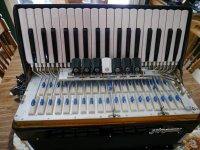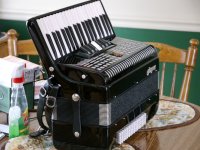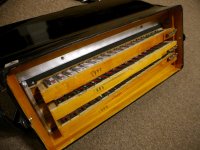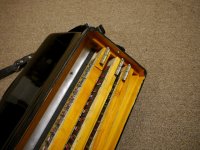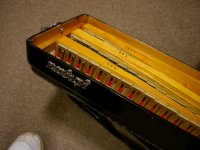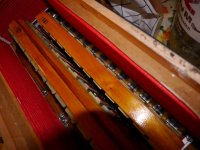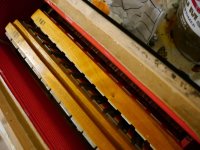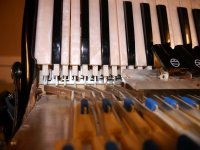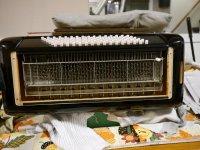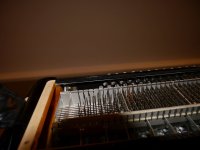I was curious about how bad a new cheap Chinese accordion could be and I purchased a 37/96 3/4 LMM unit from Thomann. Total price after shipping to the US was around 650$.
I had reasonable expectations and I wasn’t disappointed. It’s basically ok, and for the price a bit better than I expected. With that said I have found some negatives about it. The mussette isn’t very even, the volume is less than most of my other accordions, notes are a bit slower to respond and the bass notes seem to use more air than I’m used to. But on the good side of things compression is pretty good and the mechanics are playable. It sounds ok and from some spot testing the dry reeds are dead on for tuning.
I am thinking of doing some work on it in an effort to make it more responsive. Some of the reed valves are plastic and some are leather. I guess my question is about whether the stock reeds can be reasonable improved by re-valving or should I just replace the reeds with better ones and be done with. I have a complete set of Reeds from an old Scandalli that I could use.
I had reasonable expectations and I wasn’t disappointed. It’s basically ok, and for the price a bit better than I expected. With that said I have found some negatives about it. The mussette isn’t very even, the volume is less than most of my other accordions, notes are a bit slower to respond and the bass notes seem to use more air than I’m used to. But on the good side of things compression is pretty good and the mechanics are playable. It sounds ok and from some spot testing the dry reeds are dead on for tuning.
I am thinking of doing some work on it in an effort to make it more responsive. Some of the reed valves are plastic and some are leather. I guess my question is about whether the stock reeds can be reasonable improved by re-valving or should I just replace the reeds with better ones and be done with. I have a complete set of Reeds from an old Scandalli that I could use.

